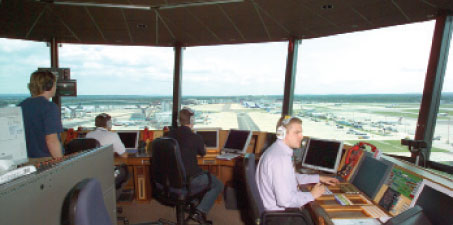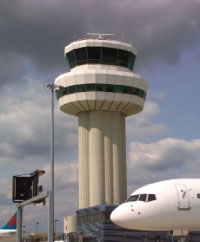
Tomlinson: “We don’t ask for any of the systems that we connect to to change what they’re already doing. Using the same ethos, we also minimise the changes that the users need to make.” Photo: NATS
Since the inception in October 2008 of the initial ACI EUROPE and EUROCONTROL initiative (which now also includes CANSO), more than 30 airports have taken steps to at least begin the implementation of A-CDM and among the latest to do so is Gatwick Airport, which this summer opted to install the NATS-developed service.
Dispelling the notion that the installation of the necessary systems and software is both time-consuming and costly, although the contract was only signed in July, a number of modules have already been successfully deployed.
“At Gatwick, within four weeks of the signing of the contract we had the first deployment in place, providing up to date information on all arriving flights,” explained Tomlinson. “Three weeks later we had our second deployment in place. The industry thinks it’s difficult to implement but we’ve developed a generic platform and interfaces which can be customised to the needs of the airport.”
He continued: “We don’t ask for any of the systems that we connect to to change what they’re already doing. Using the same ethos, we also minimise the changes that the users need to make.”
When fully implemented, the system at Gatwick will allow for all data on aircraft position, accurate arrival times and optimum departure sequences to be pulled together and manipulated to produce a single highly accurate information source, while a live radar image of the airport will also be available.
In fact, during the development process, NATS worked alongside the McLaren Formula 1 motor racing team, making use of the race prediction engine, which can accurately predict the outcome of a race based on various feeds of real-time information. “By reconfiguring this and applying it to the airport, it will give you a clear picture of what the surface is going to look like in 30 minutes, 60 minutes and so on,” Tomlinson said.
Positive impact

The NATS-developed A-CDM service is currently being implemented at Gatwick Airport. “Within four weeks of the signing of the contract we had the first deployment in place,” Tomlinson explained. Photo: NATS
While the benefits for the airport are evident, for the airlines and their passengers, the benefits are of equal significance. “For the airline, A-CDM gives them the most up-to-date view of what’s going on across the airport. This gives them the ability to manage start-up times of the aircraft to minimise taxi times and that has both economic and environmental benefits. In turn, this impacts the passengers positively.”
In keeping with the aims of ACI EUROPE, EUROCONTROL and CANSO, Tomlinson explained that he anticipates a “wider spread implementation of A-CDM in the near term” but in order to achieve this, airports must be supported throughout the adoption process.
“The Airport CDM project needs to look as much at the change management process as the technological process,” he said. “If you just turn on a system and show someone where it is on the desktop, that alone won’t deliver the benefits. You need to engage with the stakeholders and ensure that you have their understanding and trust and that’s when it can start to make a big difference.”







